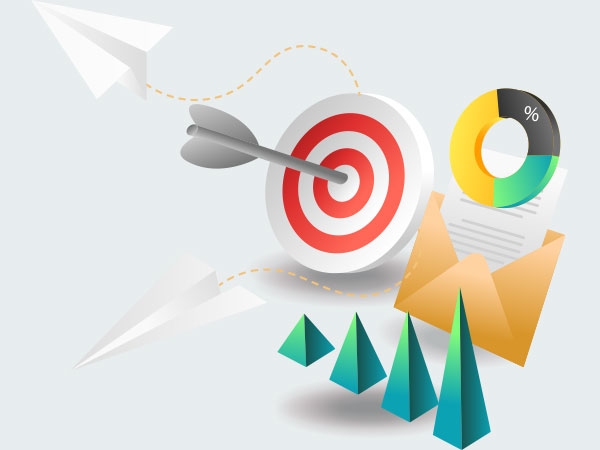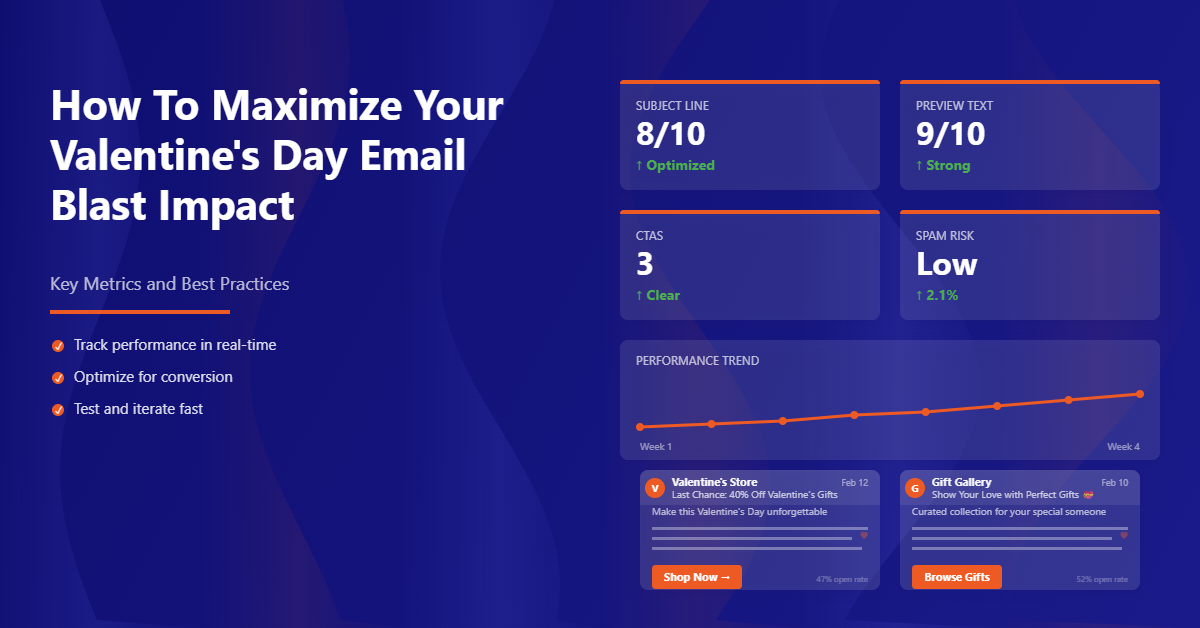Mark is an ambitious football player. And like any other football player, he aims to win the cup. He wakes up early every morning and trains for football matches every day without fail. However, he doesn’t set any strategies to win, nor does he know anything about his opponents or teammates. He blindly trains himself. Do you think Mark will become the next Messi?
The same goes for your email marketing campaigns. To achieve successful email campaigns, you need to create a solid email marketing strategy. Email marketing strategies will help you foresee things and make your email campaigns targeted with better email campaign performance results. Creating strategies will allow you to understand your audience, competitors, and your own brand better.
So here are a couple of pointers from us on how to create the perfect email marketing strategy!
Before that,
What is an email marketing strategy?
An email marketing strategy is a step-by-step plan created by professional marketers to achieve the desired end goal for email marketing campaigns. This plan paves way for a clear way to communicate with prospective or existing customers in an accurate and data-driven manner.
Why is it important to have an email marketing strategy?
- Having set an email marketing strategy will help the business stakeholders to know what should be done every step of the way when launching an email campaign. This decreases ambiguity and brings clarity to the table.
- Email marketing strategies will help you gauge the email campaign results. It will state marketing objectives beforehand and compare them with the end results to check the effectiveness of the campaign.
- It will help email marketers to choose the best tactics to achieve their email marketing goals for that quarter.
Create The Perfect Email Strategy
# Set Email Marketing Goals
Whenever we set goals, the SMART method should be used. SMART stands for Specific, Measurable, Achievable, Relevant, and Timely.
The SMART method is highly effective compared to setting x number of marketing goals to achieve. This method is recommended as it narrows down the goals to practical ones that are specific, measures in metrics, are possible, relevant to the business, and makes it possible within an adequate time frame.
# Subscribe to A Relevant Email Marketing Software
Finding the right email marketing software for your business is the first step to creating a good email marketing strategy. You need to explore different email marketing tools in the market. Check which one suits your brand, which fits the budget, and gives you access to the features you need in your industry.
Because some email marketing tools are catered towards only certain industries like Ecommerce or retail. The features created for that might not be suitable for your brand. So, search for an email marketing tool that focuses on your industry to get the features that you need.
Google, “ Email Marketing tool for bloggers” if you are a blogger,
Or Google, “Email Marketing tool for Church emails” if you belong to a congregation.
# Fix A Target Audience
After you set marketing goals, and find an email marketing tool, you’ll need to fix a target audience for your email campaigns. For this, you first need to segment your email lists into different role criteria like gender, age, profession, marital status, demography, and other relevant criteria.
Case in point, you are a dog accessory ecommerce store, then your business’s target audience primarily consists of dog owners. And so it makes sense to tailor each of your email content, design, and other elements toward dog owners.
Email segmentation is an effective way to send highly targeted emails that get more open and conversion rates. It helps you deliver relevant and valuable content to your target audience and ultimately improves the trust factor between your brand and the subscribers.
# Send the right type of email
Always send the right type of email at the right time with trigger-based emails. When there’s a new email subscriber, send a welcome email; when there is an abandoned cart, send a cart recovery email series with the right time intervals. In order to reduce time spent going back and forth, add your booking system link to your sales outreach templates. Make sure not to miss sending any of the emails because you will miss the opportunity to speak to the subscriber during that phase of the customer journey. Be consistent and relevant at every step of the customer journey.
# Set email standards for your brand
The first key to building a good email brand voice is starting by designing an email template that will support your voice. From there, you can determine what content you want to include.
A good template should be easy to navigate and look great on mobile devices as well as desktop computers. People will abandon emails that don’t immediately provide what they need, so it’s important that your subscribers be able to easily find the information they’re looking for.
Email marketers can sometimes get caught up in trying too hard with their designs, but this can backfire if people aren’t familiar or comfortable with them. It’s generally a good idea to stick with one design standard, using consistent colors, fonts, and spacing throughout all of your communications. By doing so, customers will start to recognize your brand more easily in future communications—even without having seen the email yet! “For better customer support, consider using IVRs and even website chatbots along with email marketing.
# Make it Mobile-Friendly
- Make it mobile-friendly. We’re in a mobile-first world, and that means your email marketing strategy should reflect that. Think about it: if you get an email on your phone and it isn’t easy to read or has way too much text, what do you do? You delete it, of course. So make sure your emails are easy to read with bullets and short paragraphs so they can easily be scanned by your subscribers. And when they click on the links in the email, make sure they go to a landing page that is also mobile-friendly; otherwise, all those clicks are wasted efforts.
- Keep it short and sweet. Your emails should be short and sweet, making them easier for subscribers to read on their phones and more likely to get opened in the first place.
- Use a responsive design template (or create one). A responsive design ensures that no matter what device someone uses (whether desktop or mobile), your email will adapt to how they view their inboxes, making for an optimal viewing experience every time. Most popular email service providers have options for this type of design—BayEngage offers several email templates with responsive designs available from its Template Gallery.
# Measure and Track Your Results.
Once you’re sending out your emails, you have to make sure you’re tracking the results. Make sure that your email platform has ways of measuring the success of your campaign.
If they open an email but don’t click through to the website or unsubscribe, that could be a sign either that they aren’t finding your content relevant to their interests or that there isn’t a clear call to action in the email.
You can even include a link to a survey at the bottom of whatever emails you send out, and try asking users for feedback about what kind of content would appeal most to them.
Run A/B tests on different subject lines—or even entire emails—and see which ones perform best with certain segments of users. You might find that some subscribers are more likely to open certain links than others, or less likely to subscribe if they don’t see any clear call-to-action within the first few sentences of an email.
It’s A Wrap!
Follow the above tips and define the goals of your individual campaign. You should tie them back to your overall business goal by asking yourself, “How will this help me reach my business goal?” Here are examples of questions that you can answer when defining your goals:
- What do I want users to do after they read my email? (ex: click on a link)
- What action would I like subscribers to take after reading my email? (ex: sign up for another service or make a purchase)
- How will this email drive traffic back to my website?








